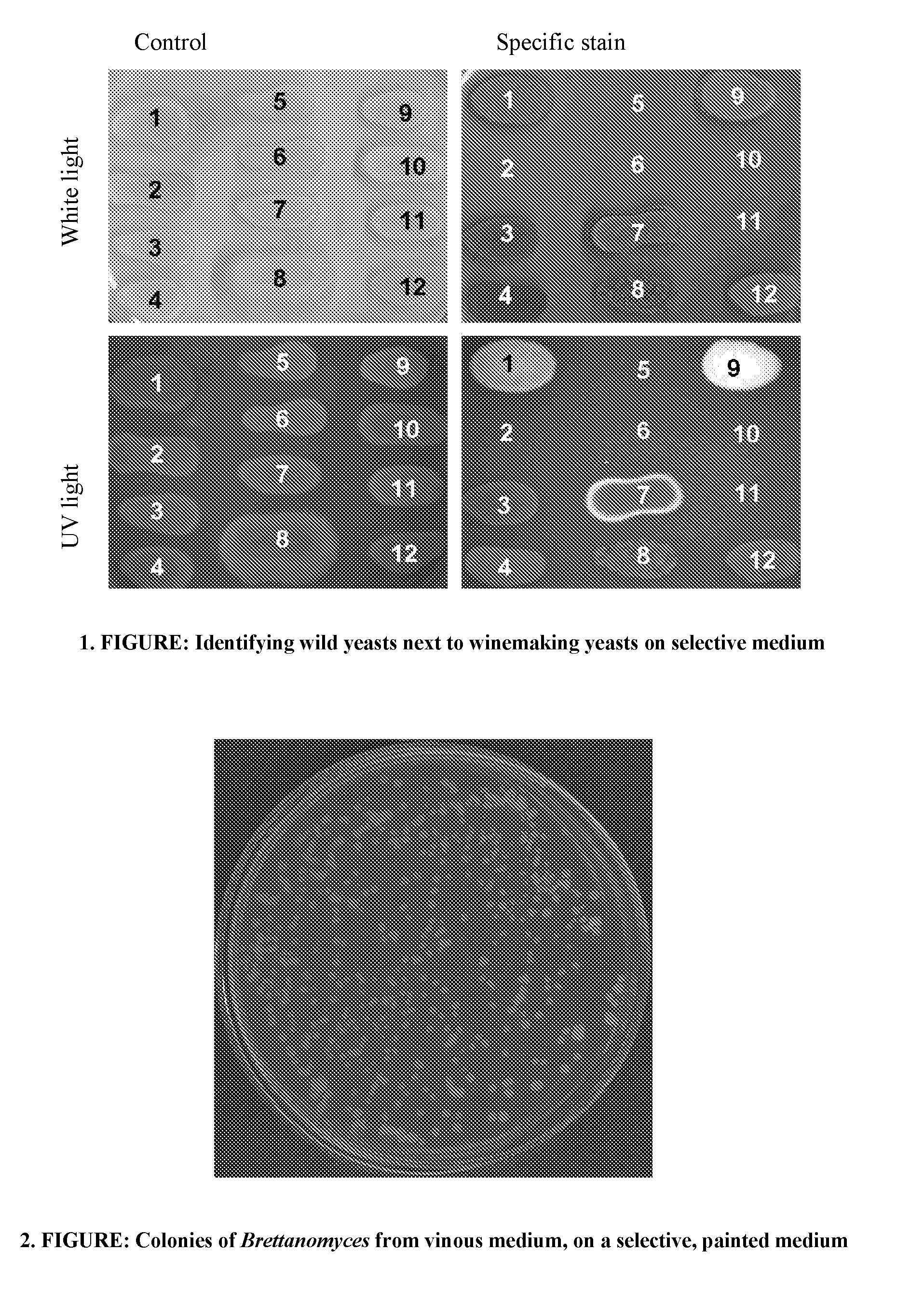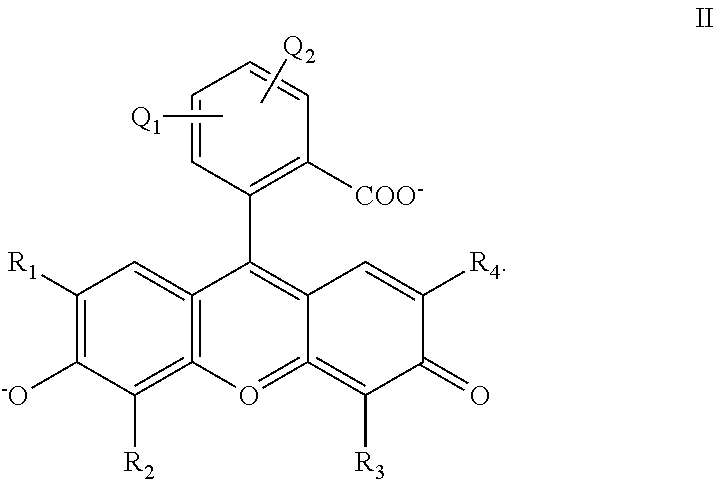Selective chromogenic medium
a chromogenic medium and selective technology, applied in the field of chromogenic media, can solve the problems of significant decrease in quality and price, serious loss worldwide, and affecting wine in premium categories
- Summary
- Abstract
- Description
- Claims
- Application Information
AI Technical Summary
Benefits of technology
Problems solved by technology
Method used
Image
Examples
example 1
Identifying Brettanomyces / Dekkera Species From Must
[0181]We make a 10 scale dilution sequence in 5 steps from destilled water that we gained from must. From each dilution we streak 50 μl onto the surface of the selective, chromogen medium in the Petri dishes. We make the grafting in three parallel running measurements. We incubate the Petri dishes between 20-25° C. for 10-14 days. The pink colonies that appear on the surface of the medium after the incubation time is over imply the Brettanomyces / Dekkera infection. We choose the dishes in which we can easily identify the number of colonies. If we multiply the number of colonies by twenty, plus the value of the dilution we get the plate count of the Brettanomyces / Dekkera of the must applied to 1 ml.
[0182]A positive dish can be examined under UV light as well. The fluorescence of the colonies confirms the obtained results.
example 2
Identifying Brettanomyces / Dekkera Species From Bottled Wine
[0183]We shake up the wine before taking a sample, then we filtrate 500 ml of it through a membrane filter with 0.45 μm pore diameter. We place the membrane filter on the surface of the selective chromogenic medium in the Petri dish, in a way that it fits properly (there should be no air bubble between them). The Petri dishes are incubated on 20-25° C. for 10-14 days.
example 3
Identifying Brettanomyces / Dekkera Species From Red Wine Stored in Barrels
[0184]We centrifugate 50 ml from the red wine in the barrel (3000 rpm, 10 min, Hereus Multifuge 3S). We suspend the pellet in 1 ml destilled water. From the suspension we streak 100 μm on the surface of the selective chromogenic medium in the Petri dish. The Petri dishes are incubated on 20-25° C. for 10-14 days.
PUM
 Login to View More
Login to View More Abstract
Description
Claims
Application Information
 Login to View More
Login to View More - R&D
- Intellectual Property
- Life Sciences
- Materials
- Tech Scout
- Unparalleled Data Quality
- Higher Quality Content
- 60% Fewer Hallucinations
Browse by: Latest US Patents, China's latest patents, Technical Efficacy Thesaurus, Application Domain, Technology Topic, Popular Technical Reports.
© 2025 PatSnap. All rights reserved.Legal|Privacy policy|Modern Slavery Act Transparency Statement|Sitemap|About US| Contact US: help@patsnap.com



